“A tragedy of guilty victims”? Memory of the Roma genocide in postwar Ukraine, part 3
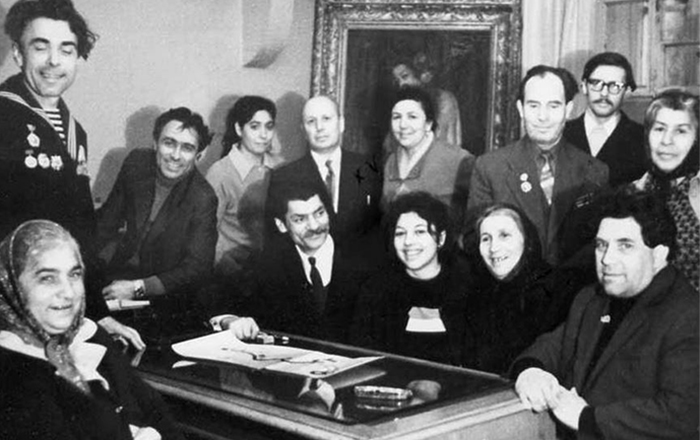
In the third part of his article, the author examines another important type of Soviet “space of memory” about the war: the sphere of artistic representation. Films, music, and literary works had a huge potential for the construction of collective perception. How were Roma characters depicted in “documentary-artistic” novels, “adventure” stories, and popular films? Analyzing the sociocultural context in which the images of Roma were embedded, the concluding part of this article demonstrates that the depiction of Roma victims as a nomadic community dovetailed with the ideas inherent in Soviet culture about nomadism as a phenomenon bordering on antisocial behavior and crime. Thus, Roma victims were perceived for the most part as people who had been persecuted justifiably and deservedly. Тhis led to the belief that they were not worthy of sympathy and deserving commemoration.
Mykhail Tyaglyy
Creative work
The aggregate of “sites of memory” about the past war, which were created by the Soviet regime starting in the 1960s, also includes the sphere of artistic reflection. Bookstores and library book collections began to fill up with numerous published accounts, stories, and novels about the “Great Patriotic War.” However, the term “reflection” is used provisionally here: The issue was rather about creating a new narrative language with a developed system of ideological accents, symbols, and markers. For a deeper understanding of the image of the recent past, the term “representation” is more appropriate. Among the authors of literary works about “the national, heroic struggle of the Soviet people on the home front,” with which consumers were literally inundated, were former underground members and partisans. In many cases, their works were written with the help of assistants who were more conversant with the literary sphere.
Literature and cinematography about the “Great Patriotic War” in general and about the occupying regime in particular were extraordinarily diverse. On the one hand, they were marked by the complex and contradictory processes that society was experiencing, and on the other, these artistic works formed them to a significant degree. The trend toward the humanization of the Soviet creative sphere during the period of the Thaw under Khrushchev was supplanted by an official and ossified narrative about the Second World War, which became predominant during the Brezhnev era. At the same time, the approved canon of memory was aimed at the new generations, which had not experienced the war and did not have their own memory of it. This conditioned the rise and active utilization of methods of presentation that had not been used earlier: Memoirs of war veterans took on a tinge of adventure literature, while literary and cinematographic works began to acquire the status of documentary accounts.
Analyses of the depiction of the Roma genocide in Soviet culture appear in studies by Nikolai Bessonov [1], Мartin Holler [2], and Аndrej Kotljarchuk. [3] These researchers concluded that the memory of the Roma genocide in the postwar USSR existed on the periphery of public awareness, and was manifested only in individual, limited spheres, rarely reaching a wider audience. The representation of this genocide was restricted primarily to the spheres of the art and artistic creativity produced by the Roma themselves (one brilliant example is the activities of the Moscow-based Romen Theater). Holler emphasizes that “the chances of success in raising public awareness of murdered Roma remained extremely insignificant in Soviet conditions. Several petitions that were sent to high-ranking party and state officials, in which Roma activists spoke about the “fate of the gypsies,” were never answered, and articles submitted to the editorial offices of newspapers were never published.”
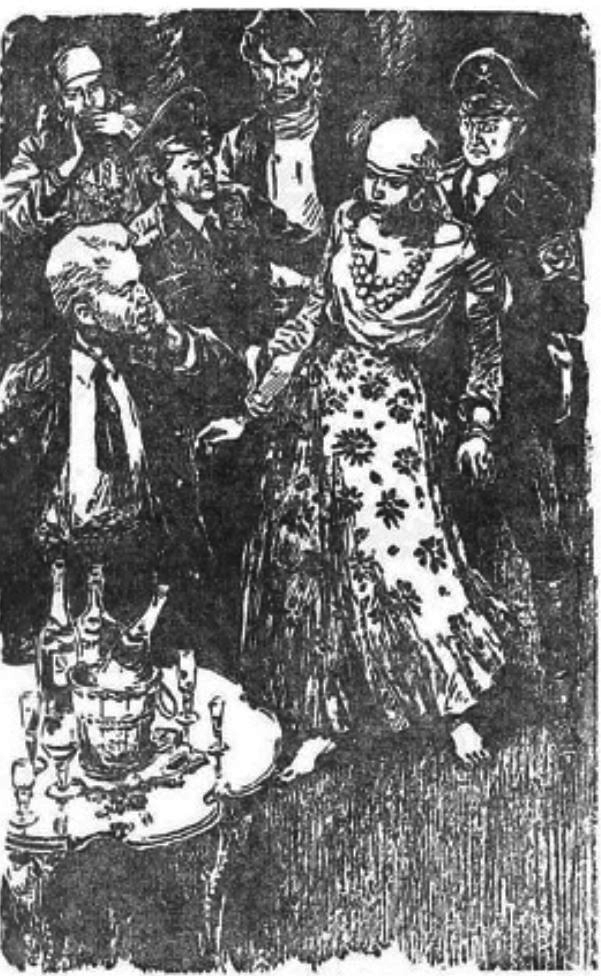
Holler justly notes that, despite its inadequacy, the existing commemorative activity in the Roma milieu took place exclusively within the framework of the Romen Theater’s pursuits. It practically never went farther than the Roma audience. However, even within the precisely defined ideological framework, the actors of this theater occasionally managed to make veiled references to the genocide, which could be spotted only by very attentive viewers. Analyzing the theater’s repertoire, Holler notes that “the content of all three dramas was identical in emphasizing partisan glory. The elucidation of the Roma genocide as such was limited mostly to a brief episode or even a one-time theatrical interlude.” [7] Plans to stage a separate work on the genocide theme were never realized until perestroika in 1985.
If one analyzes the memorialization of the Roma genocide, it is no less important to consider whether these events elicited interest among non-Roma “agents of memory”: directors, writers, screenwriters, and other Soviet cultural figures. Did they consider it necessary to interweave information about the Roma tragedy into the fabric of their own artistic accounts? If so, then how did Roma appear in books and on movie screens?
Cinematographer
Bessonov, Holler, and Kotljarchuk analyzed the Soviet films Trudnoe shchast′e (Hard Happiness,1958), Chernaia bereza (Black Birch, 1977), Khto povernetsia—doliubyt′ (He Who Returns Will Love to the End, 1966), and Tsygan (The Gypsy; the first film adaptation was done in 1967, the second—in 1979). In the first two films, Roma are only minor characters, part of the general resistance movement. The features of the Nazis’ anti-Roma policies are not examined here.
The situation is more complex with regard to the Tsygan films (the two film adaptations of the novel by Soviet writer Anatolii Kalinin). In Holler’s opinion, “the demise of Budulai’s family is not the result of the targeted killings of Roma; it happened during an attack by German tank units on a Russian collective farm. In Tsygan, the Roma genocide is not mentioned. Budulai’s sufferings embody the fate of “the Soviet citizen as such.” His individuality as a “gypsy” plays a certain role only in the short story after the war. [8] Here I beg to differ. Both the author of the book and the director of the 1967 film adaptation Yevgeny Matveev demonstrated an amazing ability to express “between the lines” that which was not desirable to say out loud. The target of the German tank attack was indeed a Soviet collective farm. However, the tank that could have attacked Slavic refugees aimed fire precisely at a Roma family in a kibitka [Roma wagon—Trans.]. This could not have failed to nudge the Soviet reader (and viewer) into thinking about the occupiers’ particular obsession with Roma inhabitants.

Moreover, Matveev’s screen adaptation includes an episode that even more clearly apprises the viewer of the fact that the status of the Roma on the occupied territory was not identical to the majority. Seventy-two minutes into the film, when the narrative turns to the past, showing how the main character (a Russian woman) takes in a Roma infant, her female neighbor shouts: “Lord, all we need is a gypsy child! Where will we go with it now? Because of him, the German will finish us off!” More than twenty years after the war, Soviet viewers still remembered that for hiding Jews, the Germans would shoot not only the guilty party but his entire family. Matveev discovered an indirect way to inform the viewer that the fates of the Roma and the Jews on German-occupied territories were similar. It is noteworthy that in the second film adaptation, by director Aleksandr Blank, this scene is missing. It is possible that this director was in the tighter grip of the Soviet ideological canon about the war. It is also likely that he did not feel the need to convey to viewers information that went outside the framework of minimally required details about the main character and his losses. Given that this episode was not in Kalinin’s novel either, the latter seems more likely.
The only film in Soviet cinematography to portray a scene about the Roma genocide was Khto povernetsia—doliubyt′, made by the Ukrainian director Leonid Osyka. [9] Kotljarchuk concludes that the films Tsygan and Khto povernetsia—doliubyt′ “sum up the new trend in the postwar policy of memory, with a shift from heroes to victims and/or heroes and their postwar trauma.” [10] However, this trend in Soviet cinematography remained unfulfilled; no new cinematic works on this topic ever appeared again.
It is also worth noting certain issues that have escaped scholars’ attention. All three directors chose to portray (or convey between-the-lines information) nomadic camp groups. No films in which sedentary Roma were shown as victims of genocide ever appeared in Soviet cinematography (despite the reality that sedentary Roma, members of local communities, were killed no less often than nomadic ones). In connection with this, portrayals in which Roma were cast not as part of “their own” society but as a marginalized and “alien” element were the only source of ideas about the fate of the Roma for people who had no personal historical memory of the events of the Second World War.
Belle-lettres
It is difficult to agree with the statement that “during the Soviet period the Roma genocide was presented exclusively by visual means (films and shows).” [11] In comparison with cinematography, the literature of the postwar period, and especially the late USSR, even though it, too, did not lead to the publication of even a single work on this topic, nevertheless featured more references to the Roma genocide than films did. This is partly explained by the popularity of the above-mentioned new genre of literary creativity about the “Great Patriotic War.” The subtitles of these works often featured such descriptive phrases as “novel-document,” “documentary story,” “adventure story,” etc.
One work that had a significant influence on the formation of the Soviet culture of memory about the Roma genocide was Anatoly Kuznetsov’s novel, Babi Yar, several lines in which describe the persecution of Kyiv’s Roma. Researchers view this fragment as proof of the tragic fate of the Roma inhabitants of Kyiv, which, taken against the backdrop of the nearly complete absence of other sources, acquired great significance. In order to answer the question of “how” rather than “what” this fragment tells us, it is worth examining it closer: “The fascists hunted the Gypsies as if they were game.... the Gypsies were subject to the same immediate extermination as the Jews. … Whole tribes of Gypsies were taken to Babi Yar, and they did not seem to know what was happening to them until the last minute.” [12].
Thus, the author, owing to his ignorance (or for other reasons), showed readers only one aspect of the phenomenon. Indeed, various documents and memoirs attest to the killing of entire Roma encampments in Kyiv by the Germans. However, there are grounds for considering that the sedentary Roma of Kyiv also fell victim to Nazi operations and found their final resting place in Babyn Yar. According to the 1939 census, Kyiv was home to 128 Roma officially registered in the city. [13] By 1 April 1942, there were only 40 Roma left. On 1 April 1943, there were only two Roma, according to the SD in Kyiv.
Despite the fact that some Roma were able to hide, blend in with the surrounding population, or leave the city, it is highly likely that the majority was killed. Kuznetsov may not even have been aware of the reprisals against the sedentary Roma of Kyiv. Аt any rate, he immortalized only the memory of nomadic Roma, who in his novel appear disoriented and passive, devoid of the subjectivity of human beings.
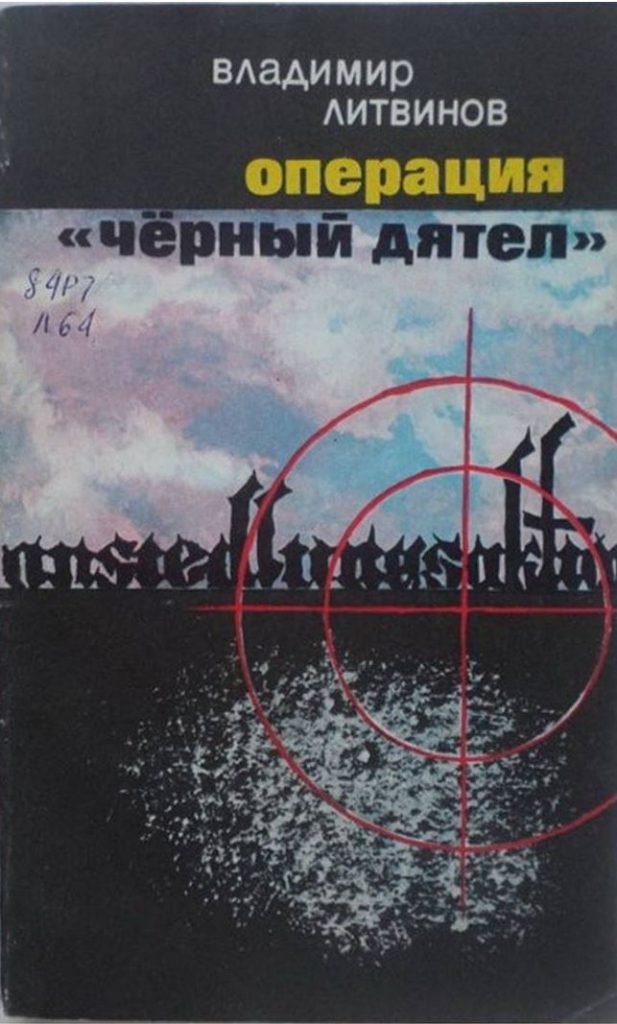
The images of Roma in literature (no more than five such examples can be cited) create an ambiguous impression. Some authors only indicate their presence briefly and sparingly. Others devote more attention to Roma by integrating individual characters or even entire families and camps into their stories.
A striking examples of works belonging to the first group is the novel Chest′ smolodu [Honor from a Young Age] by Arkadii Perventsev. According to the author and the publishers’ intent, the target audience was Soviet youth. As noted in the Afterword, in the novel “there is concern not only on the part of the writer but also the citizen about nurturing high-flown feelings in today’s young people by means of evidentiary, living examples of the great war for the freedom and independence of our Fatherland.” In describing his short-lived leave, during which he visits his home in the Kuban, now liberated from the Nazis, the hero of this novel shares his impressions of the Roma camp that he saw on the banks of a river:
“Near the river, the gypsies had set up their patched tents. Trumpets were blazing, hammers were pounding on anvils. Old gypsies, naked to the waist and with unkempt beards, were sitting on the grass. Naked-bellied gypsy children swarmed next to the tents. There were no young people. The gypsies were also fighting the enemy.
A Phanagorian Zemfira was gathering kindling in a field, singing a guttural song. Her bright-yellow skirt and tanned, bare legs flashed among the willow trees.
‘Young officer, give me your hand! I will tell your fortune about your sweet interest, a young lady, a black-haired one!'’ she shouted from afar and began waving her hands, covered with silver rings.
The burning eyes of the gypsy woman stared defiantly at me. She shook her head and shrugged; the coins of her necklace jingled.
‘What grief you have, young officer! Let me tell your fortune, there will be no grief...’
Women were bringing pails of water to a pit, where other women were making adobe, mixing earth and straw with their tanned feet.” [14]
The author notes the absence in the camp of young men because of their service in the Red Army. He thereby wants to emphasize that all young Soviet people, regardless of their ethnic origins, took part in the heroic struggle against the enemy. This device corresponds to the general thrust of his novel, which is dedicated to “heroic Soviet youth and the Leninist Komsomol.” In general, however, this work is not very different from the canons of describing “gypsies” established in Romantic literature in the nineteenth century. It contains an array of such obligatory, stereotypical attributes as shaggy hair, half-naked children, patched tents, a beautiful, young fortune-teller wearing necklaces, etc. Despite the patriotism of young people, the behavior of a significant part of the Roma people did not correspond much to the ideas about the heroic and laborious feat of the Soviet people, who were “forging victory” on the home front—such is the impression formed by these lines.
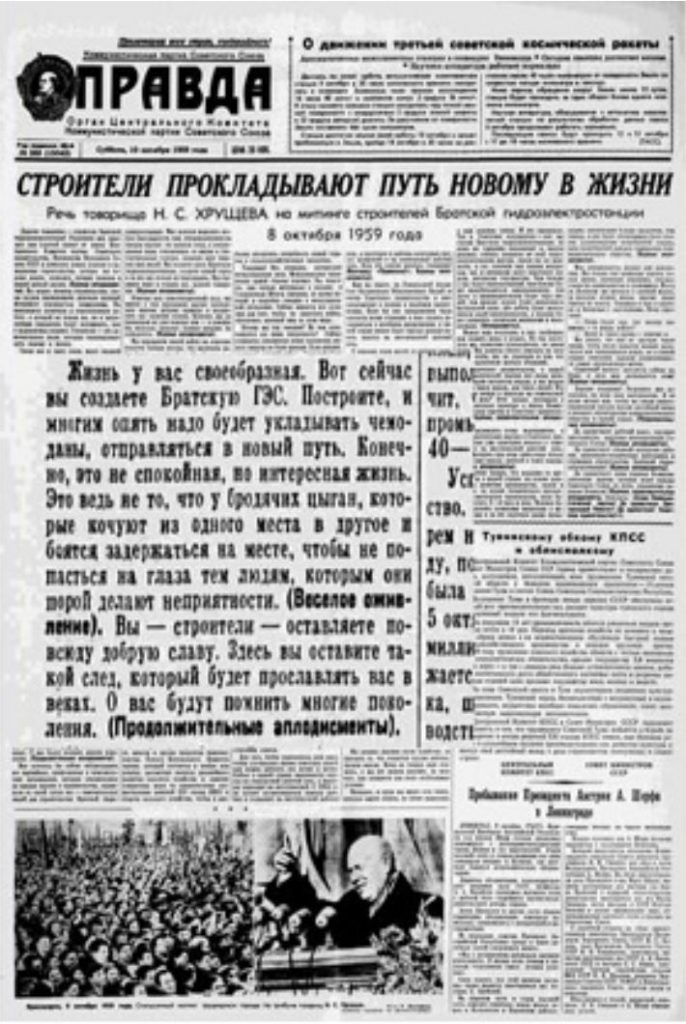
The description of the military pilot Fedor Polynin’s brief encounter with the gypsy camp leaves readers with the impression of a carefree and undisciplined community incapable of accepting vitally important advice from the experienced commander. Soviet pilots discover a nomadic encampment near the airfield. The commander, the future author of the book, allows them to remain there, but he forbids them to start bonfires, so as to avoid German aerial bombing. However, the “gypsies” “did not listen to the good advice, for which they naturally paid the price:
“In the morning we went to that place and came upon a terrible picture: bodies of people, horses, smashed wagons lying everywhere. Gypsy women, stricken with grief, were running in the forest, children were wailing.
‘Take away everything that remains at once,’ I tell an old gypsy, probably the chieftain, ‘and leave. Otherwise, you will end up in the paws of the fascists.’
By noon they reported that the clearing was deserted. The gypsies, grabbing their dead and wounded, had disappeared along the forested roads in an easterly direction.” [15]
Three pages of the documentary-adventure novel Za chas do rassveta, which was published by the Moscow-based publishers Detskaia literatura [Children’s Literature] in 1979, are devoted to a description of an encounter between Soviet partisans and a gypsy camp. In 1943 the author Ivan Kolos was the commander of the Lelchytsy Soviet partisan brigade that operated in Polissia (a forested region of northern Ukraine and southern Belarus). This fragment is not just more extensive; it also contains a more detailed description of a group of Roma who end up in a Soviet partisan detachment’s zone of operations. Questioning the Roma, the partisans learn that they had fled from Cracow, where once “they had danced, sung, and entertained the people,” believing that, with the arrival of the occupiers, the task of the Roma was “not to stick their noses in their business.”
However, the Germans soon began to persecute the Jews and “gypsies.” Their elder made contact with the Polish underground. The Germans suspected something, arrested the Roma, and were preparing to mete out reprisals, but the intervention of underground members from Cracow saved their lives. After this, the Roma decided “to head east, to the Soviet Union, where ... a large partisan movement was organized.” [16] This fragment, in contrast to most others, is written with sympathy for the Roma and their fate. [17] However, based on this example, it is difficult to form an unequivocal idea about the Germans’ motives for persecuting the Roma: Was it because they were “gypsies,” or because they had made contact with the underground and the Germans “suspected something”? Obviously, the authors and editors of Soviet publications consciously obscured the answer to this question.
A striking example of a literary work in which the “gypsy” line resounds clearly and occupies a significant portion of the narrative is Yakov Krivenok’s novel Za chas do rassveta.[18] As indicated in the annotation to the book, this “novel is written on a documentary basis, and recounts the struggle of underground members from the Sea of Azov region during the Great Patriotic War.” A group of young underground members, led by the head of a Komsomol organization, is collecting intelligence, preparing and conducting sabotage operations, and hindering the occupiers from exploiting the local economy and carrying out robberies, etc. Suddenly, an unexpected character is introduced into the narrative: a beautiful, young Roma woman who, posing as a Moldovan woman and guided by unknown goals, establishes relations with an ambitious SS man, the head of the local SD. A relationship based on trust gradually develops between her and the underground members. It is learned that she is hiding a wounded Soviet commander. At the end of the novel, when the majority of the group of underground members has been uncovered and executed, the woman becomes the instrument of revenge. She fatally stabs the head of the German punitive authorities who visited her after the executions of the Soviet patriots.
There are no other characters of Roma background in the novel. Readers are given the opportunity to learn briefly about the heroine and form an idea about her motives. The author portrays Róża —that is the heroine’s name—as a “progressively” inclined, young Roma woman. During the decade before the war she breaks with the traditions of her parents and switches to a sedentary lifestyle. Among the motives that spur her into supporting the Soviet underground is the death of her husband at the front during the first months of the war, as well as the deaths of her little son and elderly parents, who were crushed by a German tank when the Nazis attacked the camp. [19]
The role that the author assigns to her in the finale is also revealing. Clearly, Kryvenok was unable to resist the temptation to fuse the motif of just revenge for the deaths of the young Soviet patriots with the set of ideas amassed in European artistic culture about the passionate “gypsy nature,” which wreaks vengeance for the sufferings and death of her loved ones. In this case, however, the role of the latter is played by the executed Soviet patriots. The Roma character portrayed in Krivenok’s novel is the whimsical result of the modernization of stereotypical images and ideas about Roma, which were transposed into the Soviet ideological context. Despite the fact that the heroine is a member of the anti-Nazi resistance, her status in comparison with the other characters is rather marginal. The image of the woman is formed in tones that are not characteristic of the discipline and hierarchically constructed underground system, and her actions are conditioned more by emotional motives of personal vengeance than by rational and ideological awareness.

The unusual fact of the Roma children’s deportation to a Germanization center and their subsequent survival during the war spurred the journalist into launching an investigation. Currently, known facts indicate that there were indeed several dozen Roma in the Płaszów concentration camp. However, it has not been established where they came from or what happened to them later. [21] Why the children were eventually brought to Łódź and how they managed to survive are questions that remain a mystery. According to the author’s version, the children’s extraordinary survival was explained by the competition that existed within the Nazi occupation apparatus in Ukraine—intrigues that were never brought to an end. As a result, these children may have simply been forgotten, thanks to which circumstance they managed to survive. The historical background has yet to be established. For us, the way the Roma are depicted in this story is more important.
The Roma characters are not passive figures. They have individual traits, and the author portrays them with sympathy. In keeping with Soviet writers’ notions about how “proper” Roma should look like, the heroes in this story (especially the young people in the camp) prepare to settle down before the war. Their plans are ruined only by its outbreak. The camp readily sees them off to the Red Army. The camp head and family members are aware of the danger and struggle to survive. After being deported to Płaszów, the Roma revolt against the capo’s injustice and kill him, for which act they are sentenced to death. The children who survived and returned to the USSR are portrayed with warmth. The author briefly describes their subsequent fate, his description intended to demonstrate the Fatherland’s care that allowed them to mature and become full-fledged members of society.
The plotlines and literary devices single out this work from the majority of other devices that were used to portray the Roma minority. Here, the Roma are an organic part of local society and, it would appear, the target of Nazi policies based on racial and ideological principles.

However, the latter is not entirely correct. This view of the vicissitudes of the occupation policy has a reverse aspect. Of course, an artistic work, including a literary one, allows for the possibility of a fine and flexible boundary between historical facts and the author’s imagination. However, the emergence of such works is pertinent and organic only insofar as a traumatic historical reality has already been scrupulously and meticulously understood by less extravagant methods.
In German-occupied Ukraine, at least 12,000 Roma, both nomadic ones and those who were captured in forests, as well as Roma who were taken from their urban or rural settlements, were killed. In not a single work of art created in both postwar Ukraine and the postwar USSR as a whole were efforts made to understand this reality or come to terms with the trauma by artistic means (with the exception of the modest attempts discussed above). Given the utter absence of such works, the appearance of this novel, which filled this vacuum through a highly exotic treatment of anti-Roma policies (let alone one of its episodes), did absolutely nothing to encourage the inclusion of Roma victims in the collective memory. Instead of a sympathetic description of persecutions and the victims’ reactions to them, this book reduces the Roma genocide to a fascinating account of Nazi interpersonal intrigues, and its victims are (despite the reality of their personas) simply hostages to the bizarre intricacies of fate, Nazi ambitions, competing initiatives, and career calculations. Such a vision of the past inevitably led to the “exoticism” of the memory of the genocide, replacing balanced historical knowledge about it with ideas tinged with sensationalism and hoax, by which mass consciousness is readily seduced. [22].
“Fertile soil?” Contexts for images of Roma
Naturally, this study does not claim to be a comprehensive analysis of the group images of Roma and collective notions about them in Soviet culture (and in the national cultures of Ukraine, Russia, Belarus, etc.). However, it is worth remembering that the representations of Roma, examined above, did not fall on fallow ground. The way they were embedded in the collective consciousness of the Soviet audience was conditioned to a significant degree by the laws of apperception, the already existing dependence on the stock of knowledge and notions about the Roma milieu, which the audience had already accumulated.

Ukrainian folklore and literature of the nineteenth century and the first third of the twentieth features a considerable number of examples of Roma portrayals. [23] First and foremost, there exists a substantial stratum of proverbs and sayings that formed a perception of the economic activities and lifestyle of the Roma, as well as their character traits and family relationships. Along with “positive” traits (freedom-loving, resourceful, professional skills in blacksmithing), they also emphasize such “negative” ones as cunning, deceit, laziness, godlessness, domestic tyranny, etc. According to the researcher E. Milcharchyk, in traditional society, the Roma “sparked fascination, interest, and, at the same time, alarm, fear, and the desire to dissociate itself.” [24]
The social processes and new ideas that were emerging as a result of changes were also of great importance. At issue here is the 1956 Decree of the Presidium of the Supreme Soviet of the USSR “About Employing Gypsies Who Are Engaged in Vagrancy.“ The story behind the drafting of this decree sheds additional light on how Soviet state leaders imagined the nomadic lifestyle. A comparison of the various drafts of this decree with its final version proves that the draft texts initially talked about “employing nomadic gypsies.” [25] This was a rather soft wording by the standards of the time. However, different wording appeared in the final version: Instead of using the term “nomadic lifestyle,” the Soviet leaders resolved to “forbid the gypsies to engage in vagrancy.” The term “vagrancy,” in comparison with the much more neutral word “nomadism,” was loaded with more negative connotations, sparking associations with antisocial and criminal behavior.
The state leadership proclaimed that the Roma’s nomadic culture was criminal, thereby marginalizing it in the eyes of society. However, the preponderant majority of camp inhabitants did not engage in antisocial or criminal activities. Their main occupations were blacksmithing, the exchange and sale of horses, seasonal work, and petty trades. It is important to realize that such lexical exercises on the highest state level exerted a powerful retroactive action. In other words, not only did some Roma continue their nomadic existence after 1956, but the very image of a Roma encampment in past years acquired, in the eyes of society, the traits of a criminal phenomenon, and the Roma themselves as “asocial elements.”
The pages of the central Soviet newspapers often featured articles, notes, and supplements in which nomadic “gypsies” were described as the source of abuses and disorder. They often talk about characters who were the embodiment of “gypsy” qualities that were unacceptable to the Soviet people. The head of the Communist Party and the Soviet state Nikita Khrushchev likely played a special role in disseminating stereotypical ideas about the Roma in the 1950s and 1960s. Contemporaries noted his active use of proverbs and jokes that brought him closer to the vernacular culture of “simple folk.” [26] Not averse to employing coarse humor (typical of the milieu of poorly-educated party functionaries from which he came), Khrushchev, standing on his high podium, often-used phrases in his speeches that could foster the formation of ethnic prejudice. Jokes about “gypsies” were a beloved element of his linguistic culture. These escapades were disseminated in millions of copies.
In his speech “On Increasing the Production of Livestock Products,“ delivered on 25 January 1955 at the Plenum of the Central Committee of the Communist Party of the Soviet Union, Khrushchev criticized the heads of various ministries and saw fit to make the following comparison: “It is known that the gypsy also tried to teach his mare how to live without fodder. He did not feed it for eight days, and his experience might have been crowned with success had his mare not died on the ninth day.” [27] During a visit to Tula [Russia] on 17 February 1959, Khrushchev criticized Western politicians, comparing their behavior “to the actions of the heroine from the famous opera Carmen: “But you remember that Carmen ended badly ... Politicians must be more far-sighted than this expansive gypsy woman,” his words meeting with applause. [28] In a speech delivered at a meeting at the Bratsk Hydroelectric Station on 8 October 1959, Khrushchev praised the builders. Following “cheerful animation” in the hall, he declared: “At this very time you are creating the Bratsk HES. You will build it, and many will once again have to pack their bags and head to a new destination. Of course, it’s a hectic but interesting life. It’s not the same thing as nomadic gypsies, who roam from one place to another and are afraid to stay in one spot, so as not to be seen by the very people for whom they often cause trouble... You are builders, you leave good fame about yourselves everywhere.” [29]
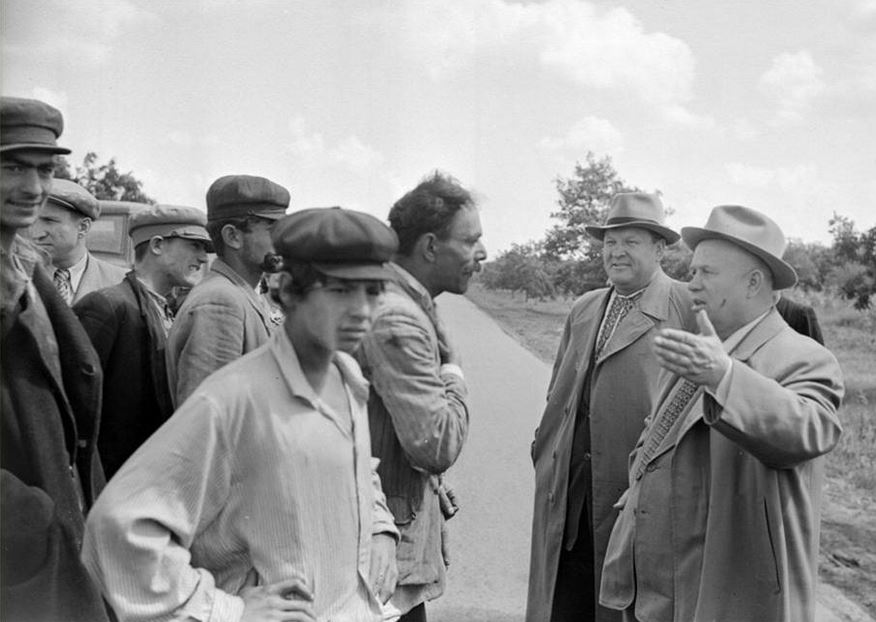
It is worth remembering that the Soviet leader made these statements in the years when the state was conducting a forcible—and for many Roma, violent—campaign aimed at destroying traditional Roma culture. At the very time that the Roma required social support, the most antiquated notions about them were being imposed on the public. After Khrushchev was deposed as head of the party and the state, this type of rhetoric disappeared from the lexicon of the country’s leaders and stopped appearing in the press.
Conclusion. “Outsiders’” trauma—someone else’s trauma?
Although the Soviet myth of the “Great Patriotic War” (which gravitated to the transformation of the various groups of victims into the general category of “peaceful Soviet citizens”) did not allow for the possibility of reflecting the sufferings of separate groups of victims, nevertheless the array of documentary evidence contains information about the massacre of the Roma. The Soviet mass media periodically singled out the Roma as victims of the occupation. Both documentary literature and works of fiction reminded readers and viewers (albeit infrequently) about the Roma as victims of Nazism. This ensured the minimal presence of the Roma in the Soviet martyrology of the war.
Returning to the Assmann’s terminological contrast about the shift of knowledge and notions about the past from the sphere of “communicative” memory to “cultural” memory mentioned at the beginning of this article, I must state that knowledge—admittedly a small amount—of the Roma’s sufferings was saved from oblivion. Cultural and communication tools allowed for it to be recorded and disseminated.
However, the way this was done led to the Soviet audience’s forming distorted notions of the reasons for the Roma’s sufferings and the essence of Nazi policies toward them. As a result, this determined the reluctance to remember them. Predominant in documentary representations of Roma were descriptions that presented them as an alien group that was not part of the local population. In mentioning Roma in the context of victims, the documentary reports, newspaper articles, information reports, and literary and artistic works portrayed (apart from a few exceptions) these people as personifying unattractive and repulsive qualities, as people who were not able to elicit empathy and fellow feeling. Most people turned out to be unable to compare and identify themselves with a group of people like this, even if was known that they had been the target of Nazi extermination policies. K. Hrusha’s article in Prapor komunizmu, which was discussed at the beginning of this article, is one of the rare exceptions.
The first characteristic of Roma victims that catches the eye in these numerous representations is that the preponderant majority of them were portrayed as a nomadic people. Roma nomadism was the first and main complaint of any government (including that of the USSR) about this community. Initially, the Soviet authorities struggled against this phenomenon by adopting methods of encouragement and stimulation (in the 1920s and 1930s) and then administrative-coercive (starting in 1956). The Soviet government associated the nomadic lifestyle with ideas about crime. A considerable proportion (even the majority of the Roma population in the USSR, particularly in Ukraine) had become sedentary only recently and in some places was no different from its non-Roma neighbors, living dispersed or in Roma neighborhoods of Chernihiv, Kyiv, Zhytomyr, Symferopil, etc. However, when Soviet publications (based on the NDK war crimes commission) or postwar newspapers wrote about victims of the occupation, then, even if they mentioned Roma in passing, they did this as a rule without explaining to readers the causes of their death.
The evidence available in memoiristic literature, memoirs, and accounts of the war also presented the Soviet audience with an image of Roma as a predominantly nomadic community. However, partisans who were operating in the forests could hardly have encountered any other type of Roma. Even a considerable number of Roma who adopted a sedentary way of life before the war resorted to nomadism in an effort to find refuge in forested areas. In this regard, however, the perception of them was complicated by the realities of wartime and the criteria of people’s fitness for active resistance, which did not boost the partisans’ sympathy for the Roma seeking their protection. As a result, the depictions of Roma in memoiristic literature have an unappealing, if not repellent, character.
The timid and frequently allegorical attempts to work out the trauma of the Roma genocide in the sphere of art could hardly alter this state of affairs. Long-established anti-Roma stereotypes and the firmly cemented mythologemes of the “Great Patriotic War” did not anticipate a discrete and sensitive conversation about the tragedy of this people. They allowed for the introduction into the picture of the war only those Roma individuals who fit into it as members of the Soviet community which “by its heroic efforts opposed the German-fascist invaders.”
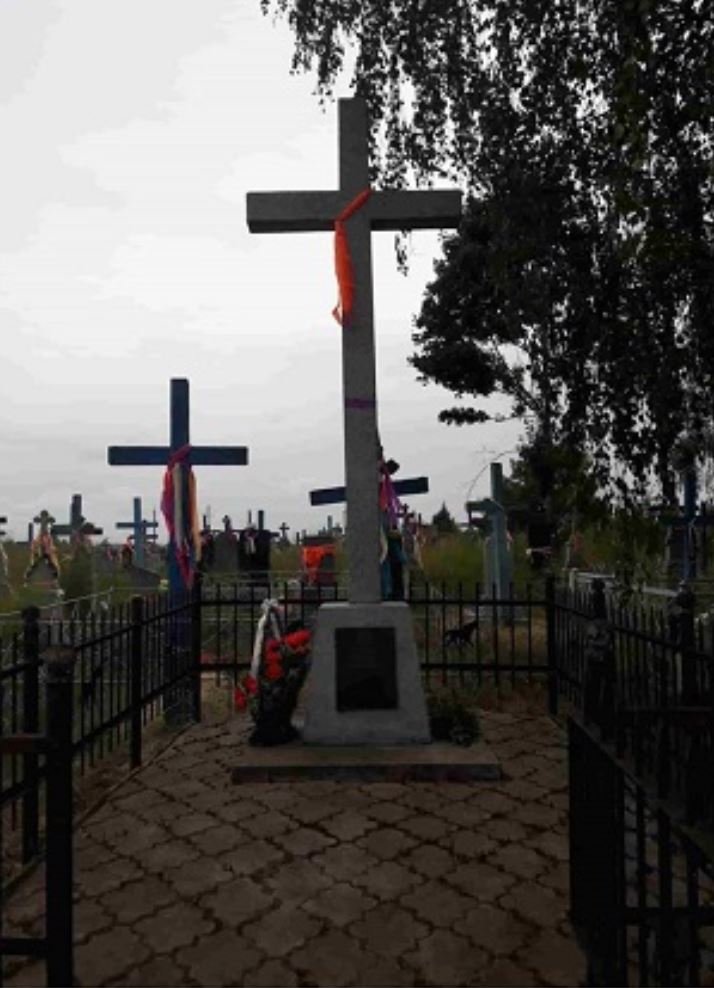
Widespread public notions about the Roma being a “nomadic tribe” and the treatment of their nomadic lifestyle as improper and criminal gave readers no choice but to guess the reasons why the Nazis hunted the Roma, one of many stereotypes about a people that “refused to work.” The true racial and ideological nature of the Nazis’ anti-Roma policies was thus denied. Furthermore, this led to the dissemination of terrible public opinion that went as follows: Since the law-abiding, rational, disciplined, and hardworking Germans were persecuting the “gypsies,” then there were probably objective reasons for this. It is hardly necessary to explain that this picture was turned on its head, inasmuch as the victims in this representation were treated as the guilty parties according to the genocidal policy that the Nazis implemented against them.
The reasons for the persecution of the Roma, which were formed in the imagination of the Soviet majority, differed from those that conditioned the persecution of the representatives of the majority community. Furthermore, some of the latter demonstrated a willingness to continue carrying out such persecution (although not on the Nazi scale). What consequences could this have had for the memory of the Roma genocide? Recent research on the phenomenon of cultural trauma, especially “constructivist” approaches to the identification of collective trauma and methods to overcome it, are helping us understand this better. Characterizing the degree of willingness on the part of contemporary Central Europeans to perceive the Roma’s post-genocidal trauma as their own, the sociologist Jeffrey C. Alexander observed that people in these countries recognize that the gypsies are “trauma victims, the bearers of a tragic history. Yet insofar as large numbers of Central Europeans represent the “Roman people” as deviant and uncivilized, they have not made that tragic past their own.” [31]
Despite the fact that, after the fall of communism, the dissolution of the USSR, and the emergence of national historical narratives, new models of memory about the period of Nazi rule began to form in the post-socialist societies, the foundation of popular historical notions about the essence of National Socialist policies toward the Roma, on the whole, remained unchanged. One of the reasons why the Roma genocide is being integrated very slowly and with great reluctance into national canons of memory is the same ingrained idea that was recreated from the 1940s through the 1980s in various cultural forms: that the Roma, being “outsiders,” were persecuted justifiably and deservedly, and therefore do not deserve either sympathy or proper commemoration.
Special to Ukraina Moderna. Published here for the first time. Reproducing the text (partially or in its entirety) requires permission from the author or the editorial office of the Ukraina Moderna Web site. ©Mykhail Tyaglyy.
All illustrations supplied by the author.
This article was supported by a research stipend awarded by Imre Kertész Kolleg Jena. The author is grateful to the team and fellow stipend-holders at Imre Kertész Kolleg Jena for their fruitful discussions and valuable advice.
 Mykhail Tyaglyy is a scholarly associate of the Ukrainian Center for Holocaust Studies (Kyiv), managing editor of the scholarly journal Holokost і suchasnist. Studiї v Ukraїni і sviti (Holocaust and Modernity: Studies in Ukraine and the World). His academic interests include the history of the Holocaust, the Roma genocide, studies of the memory of genocide victims, and the specific character of teaching the history of the Holocaust and other genocides. He is the author of a number of works about the Holocaust in Crimea; the course and consequences of the Nazis’ anti-Roma policy in Ukraine; the compiler of a collection of documents and curator of an educational history exhibit devoted to these questions; and the scholarly editor of Ukrainian translations of studies in Holocaust history.
Mykhail Tyaglyy is a scholarly associate of the Ukrainian Center for Holocaust Studies (Kyiv), managing editor of the scholarly journal Holokost і suchasnist. Studiї v Ukraїni і sviti (Holocaust and Modernity: Studies in Ukraine and the World). His academic interests include the history of the Holocaust, the Roma genocide, studies of the memory of genocide victims, and the specific character of teaching the history of the Holocaust and other genocides. He is the author of a number of works about the Holocaust in Crimea; the course and consequences of the Nazis’ anti-Roma policy in Ukraine; the compiler of a collection of documents and curator of an educational history exhibit devoted to these questions; and the scholarly editor of Ukrainian translations of studies in Holocaust history.
[2] Holler, “Die nationalsozialistische Vernichtung der Roma,” 245–94.
[3] Kotljarchuk, “Invisible Victims,” 129–50.
[4] Holler, “Die nationalsozialistische Vernichtung der Roma,” 272.
[5] Russian State Archive of Literature and Art (Rossiiskii gosudarstvennyi arkhiv literatury i iskusstva, hereafter cited as RGALI), f. 2928, op. 1, d. 74, l. 8. I am grateful to Svitlana Burmistr for giving me an opportunity to examine this document.
[6] The thesis that minorities persecuted by reason of race (above all, Jews) should feel particular gratitude to the Soviet state for being saved from total destruction by the Nazis was not actively employed in Soviet propaganda (which generally preferred not to mention the existence of minorities at all). However, this kind of rhetoric began to be actively introduced into the official Russian history policy in the last decade.
[7] Holler, “Die nationalsozialistische Vernichtung der Roma,” 277.
[8] Ibid., 282.
[9] For an analysis of scenes in this film portraying the Roma genocide, see Kotljarchuk, “Invisible Victims,” 136–39.
[10] Ibid., 140.
[11] Ibid.
[12] A. Kuznetsov, Babii Iar: Roman-dokument (Zaporizhia: Interbuk, 1991), 114.
[13] RGAE, f. 1562, op. 336, vol. 1, d. 990.
[14] A. A. Perventsev, Chest′ smolodu; Roman (Moscow: Sovremennik, 1975), 275. Thirty thousand copies of this book were printed.
[15] F. P. Polynin, Boevye marshruty (Moscow: Voenizdat, 1972), 114. One hundred thousand copies of this book were printed.
[16] Kolos, Za chas do rassveta, 45–48. One hundred thousand copies of this book were printed.
[17] It is possible that the author’s sympathetic attitude to the “guests” was connected with the fact that there were Roma partisans in the detachments subordinated to Kolos. An interview with one of them, Tetiana Markovska, who was in the same detachment as her brothers after they succeeded in evading reprisals, has been published. See A. Gogun and M. Tserovich, “Vospominaniia veterana Lel′chitskoi partizanskoi brigady GRU T. Markovskoi,” Holokost і suchasnist′: Studiї v Ukraїni і sviti, no. 1 (2009): 71–103. It is likely that Kolos, who knew by sight the partisans of Roma background and had sympathy for what they had experienced, had no need to resort to widespread clichés in the process of describing them; he chose words from his personal experience.
[18] Iakov Krivenok, Za chas do rassveta (Rostov-on-Don: Rostovskoe knizhnoe izdatel′stvo, 1979). Thirty thousand copies of this book were published.
[19] Readers will spot the similarity to the personal story of the main hero Budulai in the novel by A. Kalinin, Tsygan, written in the 1960s. Like in Kalinin’s novel, Krivenok, too, does not specify whether the deaths of the members of Róża’s Roma family resulted from the Nazis’ purposeful hunt for the Roma because they were Roma.
[20] V. Litvinov, Operatsiia “Chernyi diatel”: Dokumental′naia povest′ (Kyiv: Molod′, 1981). Sixty-five thousand copies of this book were printed.
[21] Ryszard Kotarba, Niemiecki obóz w Płaszowie, 1942–1945; Przewodnik historyczny (Warsaw: Instytut Pamięci Narodowej–Komisja Ścigania Zbrodni przeciwko Narodowi Polskiemu, 2016), 22.
[22] It is possible to trace the ambiguous impact of this book on the culture of memory of the Roma genocide in contemporary Ukraine. In 2000 the Ukrainian ethnographer O. Danylkin submitted a brief recap of it entitled “Gypsy Children and Nazi Intrigues”—without citing the author’s name—to a thematic publication on the history of the Roma genocide, Tum Balalaika, which was published by the St. Petersburg branch of the Memorial organization. From there the article ended up on the Internet. For fifteen years the Ukrainian Center for Holocaust Studies has held annual writing competitions on “History and the Lessons of the Holocaust” for schoolchildren. Every year several compositions devoted to the Roma genocide are submitted. It is the rare composition that does not refer to this article found on the Internet. The quality of the arguments suffers greatly because the work lacks scholarly style, and the author slides from logical arguments into the sphere of mystery, mystification, and the substitution of rational judgments by means of literary and adventurist discourse.
[23] For a portrait of Roma in folklore, see, e.g., H. Rachkovs′kyi, “Tsyhany v ukraїns′kii paremiї,” Narodoznavchi zoshyty (Kyiv), nos. 3–4 (2005): 397–401; I. Iu. Aharkova, “Vtilennia stereotypnykh uiavlen′ pro etnomental′ni osoblyvosti predstavnykiv inshykh narodiv u frazeolohiї і paremiolohiї ukraїns′koї movy,” Ucheni zapysky Tavriis′koho natsional′noho universytetu im. V. I. Vernads′koho 24, no. 1, pt. 2 (2011): 3–9; Zh. Ruie-Villoubi [Jeanmarie Rouhier-Willoughby], “Zli/dobri chuzhyntsi: Ievreї ta tsyhany v rosiis′kykh narodnykh lehendakh,” Narodna tvorchist′ ta etnolohiia, no. 5 (2012): 42–45; L. Shuma, “Etnichnyi stereotyp roma (tsyhana) v narodnykh lehendakh,” Studia methodologica (Ternopil), no. 43 (2016): 128–35.
[24] E. Milczarczyk, “Liudy–ne-liudy, tobto pro tsyhan v narodnykh perekazakh ta prysliv’iakh,” Narodoznavchi zoshyty, nos. 3–4 (2005): 384.
[25] Prezidium TsK KPSS, 1954–1964: Chernovye protokol′nye zapisi zasedanii; Stenogrammy; Postanovleniia, vol. 2: Postanovleniia, 1954–1958, ed. A. A. Fursenko (Moscow: ROSSPEN, 2006), 411–14.
[26] See, e.g., the biographer’s comment about Khrushchev: “Many people liked his simplicity, his jokes, and his ability to speak without notes, although he sometimes repelled educated people with his coarseness, uncouthness, and illiteracy (V. N. Shevelev, N. S. Khrushchev [Rostov-on-Don: Feniks, 1999]), 117.
[27] “Ob uvelichenii proizvodstva produktov zhivotnovodstva: Doklad tovarishcha N. S. Khrushcheva na Plenume Tsentral′noho Komiteta KPSS 25 ianvaria 1955 goda,” Pravda, 3 February 1955, 2. This speech also appeared in Izvestiia, 3 February 1955, 2.
[28] “Vruchenie ordena Lenina Tul′skoi oblasti,” Pravda, 18 February 1959, 2. See also “Rech tovarishcha N. S. Khrushcheva,” Izvestiia, 18 February 1959, 2.
[29] “Stroiteli prokladyvaiut put′ novomu v zhizne: Rech′ tovarishcha N. S. Khrushcheva na mitinge stroitelei Bratskoi gidroelektrostantsii 8 oktiabria 1959 goda,“ Pravda, 10 October 1959, 1. This speech also appeared in Izvestiia, 10 October 1959, 1.
[30] “’Sovetskaia pechat′ dolzhna byt′ samoi sil′noi i samoi boevoi!’: Vystuplenie N. S. Khrushcheva na prieme sovetskikh zhurnalistov v Kremle 14 noiabria 1959 goda,” Pravda, 18 November, 1959, 1. See also Izvestiia, 18 November 1959, 1. For similar examples from Khrushchev’s speeches, see Nikita Sergeevich Khrushchev: Dva tsveta vremeni: Dokumenty iz lichnogo fonda N. S. Khrushcheva, 2 vols, ed. N. G. Tomilin (Moscow: MFD, 2009), 2: 370, 405.
[31] Alexander, Meanings of Social Life, 96.
The accuracy of the facts and quotations cited in this article is the sole responsibility of the authors of the texts.
Originally appeared in Ukrainian @Ukraina Moderna
Translated from the Ukrainian by Marta D. Olynyk.
Edited by Peter Bejger.
NOTE: UJE does not necessarily endorse opinions expressed in articles and other materials published on its website and social media pages. Such materials are posted to promote discussion related to Ukrainian-Jewish interactions and relations. The website and social media pages will be places of information that reflect varied viewpoints.



















